Simon St.Laurent: October 2012 Archives
By Karl North
The vulnerability of cities and suburbs in the post-petroleum era has been the object of much debate because their present organization makes their operation so energy-intensive. The debate heretofore has tended to swing between two extremes. One claims that these forms of social organization on the land are so unsustainable that their populations will be forced to abandon them gradually as the energy descent progresses.[1]
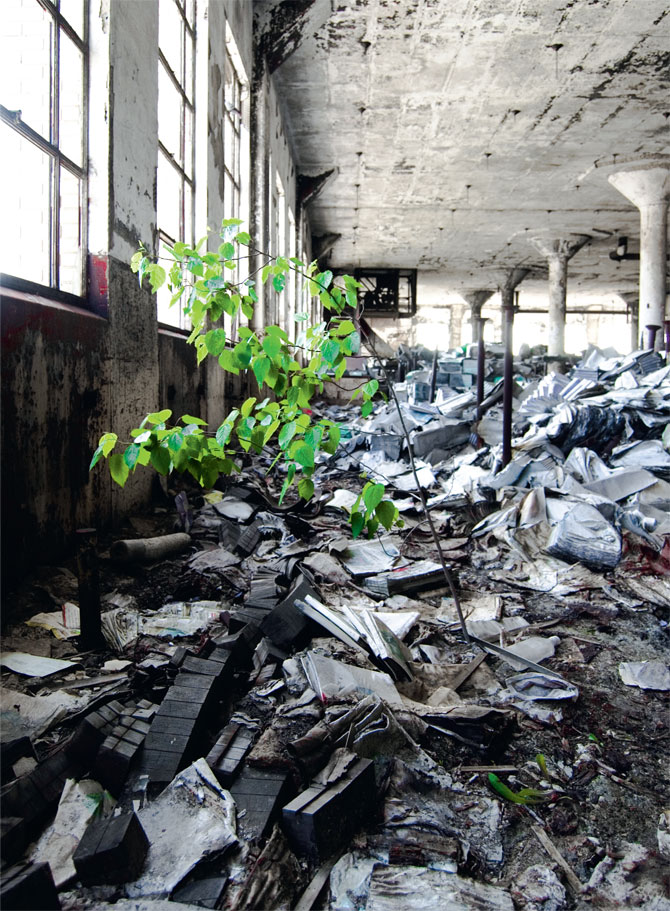
Figure 1. A tree grows in Detroit
(photo by James Griffioen, vice.com)
James Kunstler, a well-known critic of the kind of cities and suburbs that have emerged in recent decades, puts it bluntly:
The whole suburban project I think can be summarized pretty succinctly as the greatest misallocation of resources in the history of the world. America took all of its post-war wealth and invested it in a living arrangement that has no future.[2]
The other extreme entertains dreams of massive programs of public transportation to save suburbia. It also relies heavily on technologies like high-rise agriculture and on the efficiencies of population density to save cities. This is the vision of the eco-cities movement.
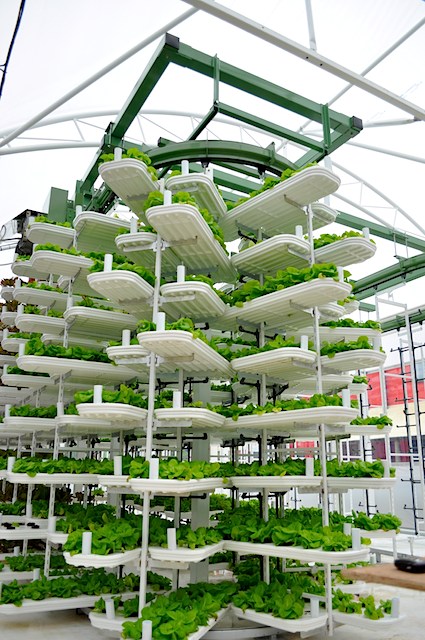
Figure 2. Techno-fantasy unchained
(Time magazine via City Farmer News)
Neither of these scenarios makes much sense. The abandonment thesis ignores the immense accumulated wealth of the built environment in metropolitan areas, which is not likely to be left to fall apart, but will more likely support a certain level of human population if salvaged for other uses than it was originally designed for.[3] It is conceivable that modern society will be reduced to energy inputs available in 1800, before much use of fossil fuels. But that would not mean a simple return to what life was like in those times, due in part to the bonanza of accessible raw materials that the present built environment represents (a good thing), and in part to two hundred years of accumulated damage to the planetary resource base (not so good) that was unimaginable in 1800.
On the other hand, the claim that technological improvement can keep cities and suburbs functioning in the current ways at current population levels fails for many reasons. First, it perpetuates the above-mentioned accumulation of damage to necessary ecosystemic functions, damage that is intrinsic to “technological improvements,” damage that is already causing exponential growth in the operating costs of metropoles. Then there are the two reasons that the technological savior argument always has failed: there is a limit to the efficiencies that can be delivered by technology, and every technological advance requires an increase in complexity in the socio-economic system, with a resulting increase in consumption of energy and other raw materials in an era of increasing resource scarcity.[4]
Moreover, as genres of social organization and human landscapes, modern cities and suburbs are among the most energy consumptive imaginable because their continued existence relies on a broader agro-industrial base. Most calculations of the energy budgets of metropolitan areas far underestimate because they fail to account for the energy embodied in their construction and maintenance, which includes the vast and often distant agricultural and industrial plant, transport, and communication systems necessary to keep them running. This diagram suggests the scope of the support system required just to keep a metropolitan population in food.
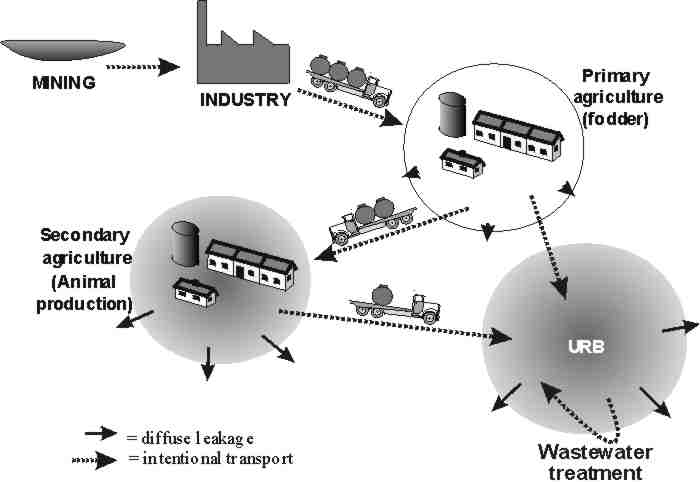
Figure 3. “The linear flow of minerals from mines to farms and then dense human settlements leads to depletion at one end and the concentration of wastes or dispersion into water at the other.” — Jason Bradford (http://www.theoildrum.com/node/5773), graphic by Folke Günther
Of course, cities have existed ever since the advent of agricultural systems capable of providing the surplus necessary for their growth. But after a period of expansion, often spanning centuries, they have usually destroyed enough of their resource base to cause them to decline. In the last two centuries, cities have grown markedly in size and consumption of resources. But this unprecedented level of urban expansion is entirely reliant on access to fossil energy and other nonrenewable resources that are now becoming permanently more scarce.
The main weakness of the eco-cities movement is its failure to squarely face the increasing scarcity in energy and other resources and seriously consider its implications in the energy descent. Green or new urbanists claim that cities like New York are sustainable because their population density allows a smaller per capita ecological footprint than suburbs.[5] The clustering of populations that the ecocities movement advocates does conserve energy in key areas like building heating and human transport. This clustering will be essential in the energy descent at every scale of human community if we hope to avoid not only the energy costs of most present building configurations and their reliance on a distance economy, but also their misuse of agriculturally valuable land.
But heating and human transport are only one part of the energy cost of operating cities. The green urbanist scenario that compares present cities favorably to present suburbs fails to consider the more comprehensive assessment of many energy descent analysts that no dominant configuration of land use and built environment in the US today, urban, suburban, or rural, is sustainable without fossil fuels. The embodied energy in cities in particular involves upstream energy and material flows along many long production chains, and it requires constant renewal due to entropy (depreciation). Hence embodied energy in cities is commonly three times as high as operational energies like heating and daily human transport.[6]
As a result, the eco-cities movement’s current urban redesigns are characteristically overly complex and overly expensive, and are therefore aimed, like much organically grown food and most present ecovillages, at a gentrified market that will not survive the energy descent. This is not meant to criticize these efforts, but simply to point out that they reflect the economic and cultural choices of a society that has enjoyed cheap energy.
In addition to narrow thinking about the massive inflows of energy and other natural resources that today sustain metropolitan areas, the ecocities movement rarely considers more fundamental questions about urban populations posed by energy descent. In a world where the energy from oil has permitted a tripling of the population and, in rich countries, an average per capita ecological footprint (a measure of resource consumption) so large that it could support 30 African peasants, what is the true carrying capacity? How is the disparity in footprint justified when it reduces the supportable global population? And what is the largest sustainable city when urban population densities are on the order of 67,000 people per square mile[7], and the transportation cost of provisioning such densities from ever-more-distant locations increases with city size beyond the declining energy capacity of the planet?
A More Likely Scenario
A third scenario that I will explore here as more likely than the two considered above envisions a major transformation of both urban and suburban land and resource use to make cities and suburbs habitable in the coming low energy era, although necessarily supporting a much lower population level than they do today. As in all ecosystems, the carrying capacity of these areas will contract to fit the available energy, which sooner or later will be mostly solar.
Carrying capacity (CC) is an essential concept for thinking in scenarios about a future in which access to key resources is declining. Carrying capacity is not just a population level. It is first the level of sustainable resource consumption (SRC) that a particular landscape or resource base can support, which in turn determines the mix of population level and per capita resource consumption or material standard of living. Thus the equation for sustainable resource consumption is
SRC = population × resource consumption per capitawhich makes clear that sustainable carrying capacity in terms of the actual number of people it will support depends on the level of individual consumption:
CC (sustainable population) = SRC ÷ resource consumption per capita
This understanding of carrying capacity raises a concern about present resource consumption. The modern industrial society that urban areas epitomize now relies 80-90% on nonrenewable resources. A society that must return to a resource use rate that rarely uses nonrenewables except as recycled salvage will need to rely mainly on low-input agriculture, aquaculture, and forestry for food and fiber, and similar low-input technologies using renewable and salvageable materials in other areas of production. Hence the inevitability of a return to a relatively low-technology solar energy economy is likely to reduce populations in large metropolitan areas to 10-20% of their current levels.[8] Dispersal from city centers to hinterlands will account for much of the decline. In the end this will be a salutary outcome because it will contribute manpower to the increasingly labor-intensive farming systems that will replace industrial agriculture.
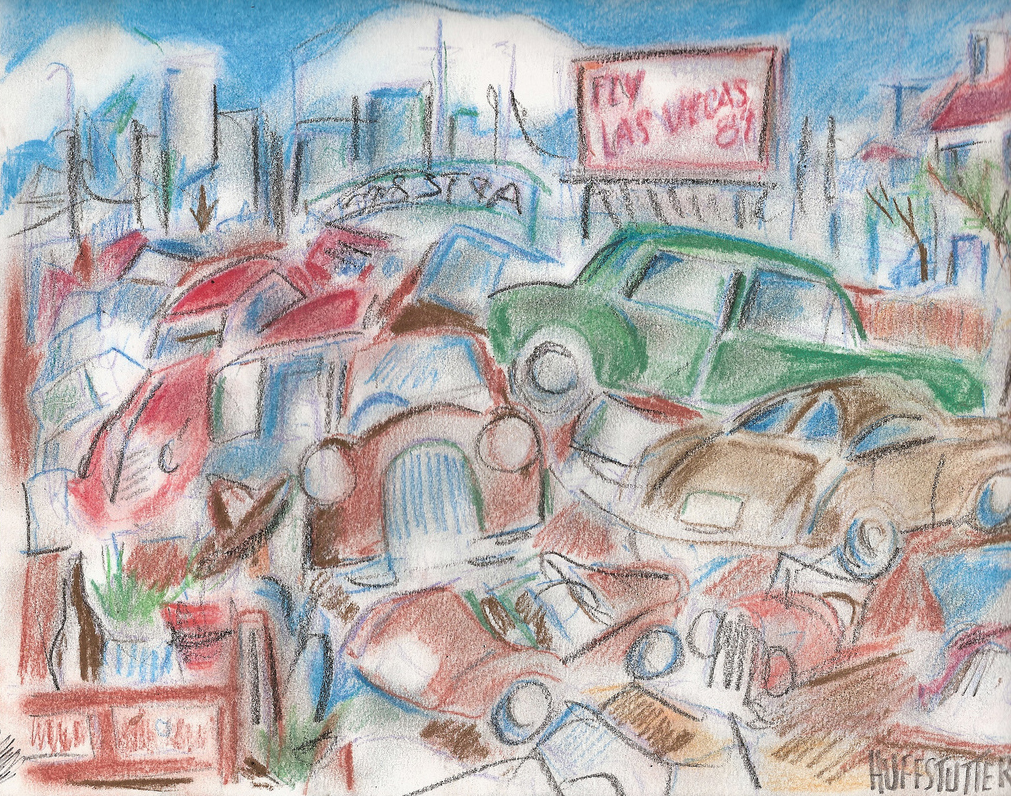
Figure 4. (Pastel by Robert Huffstutter)
How will employment and therefore population shrink in metropolitan areas? The relative concentration of wealth in metropolitan areas has spawned an urban economy that depends heavily on discretionary spending beyond essentials. This part of the economy will tend to shrink first as the energy to support the modern economy becomes scarce.
Also, many people who live in cities and their suburban bedroom communities work in an economy that is parasitic: instead of creating value it simply transfers wealth from one group to another. Much employment in the so-called FIRE sector (finance, insurance, real estate) falls into this category, which also includes much government, advertising, litigation, and lobbying activity — economic sectors that have arisen to exploit our society’s failure to find better ways to perform essential functions. Jobs in this parasitic economy can be expected to disappear early in the energy descent. Many urban clerks in cubicles, data gathering to feed the wealth transfer game, will need to convert to skills that provide life’s basic necessities — food, shelter, basic tools, and services — and for many that will mean leaving the city for farms.
In reality, much of the present urban population will be needed on farms. According to energy descent scientist Richard Heinberg, the de-industrialized agriculture that replaces the current energy-intensive form of food production in the US will require fifty million farmers instead of the present two million.[9] Indeed, there is a growing new farmer movement across the US, served by organizations like Groundswell here in Tompkins County.
The challenge of envisioning a plausible conversion of metropolitan corridors like Bos-Wash to landscapes that are livable sans fossil fuel is to think beyond current models of development or even redevelopment schemes requiring levels of capital investment that a post-petroleum economy cannot afford. The expensive visions of both the green urbanist movement and the nodal cluster suburbanists run aground on this obstacle. Awareness comes slowly because thinking about the upkeep of these structures in the energy descent is often counterintuitive:
Cities overburdened with skyscrapers will soon discover that these structures are liabilities, not assets. The skyscrapers deemed most “innovative” by today’s standards — the ones most dependent on high-tech materials and complex internal systems — will be the greatest failures. This includes many of the new “green buildings.”[10]
An additional hurdle is the current resistance of the denizens of these landscapes to using them differently, but eventually that resistance will melt away as necessity becomes the mother of adaptation.
Throughout their history, metropolitan areas have been centers that have concentrated wealth and power drawn from exploited peripheries. Early in the energy descent they can be expected to use this accumulated advantage to allocate resources disproportionately to themselves and thereby prolong consumption levels and material living standards even as they decline in society as a whole. The maintenance of centralized control that this requires may hinge on something as simple as the ability of security forces, police and military, to fuel their operations on renewables like biodiesel.
Later in the energy descent, however, much of the fuel-intensive economic activity and centralized, hierarchical organization that is the raison d’être of cities and their umbilically connected suburbs will become unaffordable, and the related employment and population will evaporate. The long term budgetary agony of central governing administrations, now well under way, is an early indicator of economic contraction to come. Then human activity will return to a focus on the basic necessities of food and shelter, and economies in these places as elsewhere will self-reorganize around the provision of farming, food systems, and housing that work with minimal fossil fuel. My aim here is to summarize how I think this is likely to happen. The key element in my scenario is the liberation of the built environment and its rearrangement for other uses, a change made possible by the contracting economy and population of metropolitan areas that I have described as inevitable over time in the energy descent. Finally, I will suggest how this scenario might play out in Ithaca, New York and its hinterland, and by extension, in other small cities and towns.
The Post-Petroleum Metropole
Cities located on waterways will remain centers of some distant trade as they have for centuries. On the downside, rising water levels could eventually reduce habitable areas in seaport cities. But for a while as cities and suburbs shrink and depopulate, urban activity will center on salvage of the built environment. As many parts of the built environment are abandoned, we can expect their materials and land to be reclaimed for structures and spaces for growing food and for makeovers of housing and other structures to the level of energy efficiency required by the new economy. Because the return to a solar energy economy will support only a limited population, most land and buildings will stand empty and provide a broad inventory of materials or, once cleared, space for gardens. It is hard to imagine conversion of places like the canyons of south Manhattan to either appropriate housing or food production, so some city zones may remain abandoned except for salvage activities. At the end of Apartheid in South Africa, for example, white businesses left the high-rise section of Johannesburg. The squatters who replaced them could not afford the energy needed to maintain the buildings, and they gradually fell apart.[11] As urban areas everywhere experience a similar drop in energy use, urbanites will abandon energy-intensive structures. Hence a degree of decentralization will occur as urban areas devolve into compact, semi-self-sufficient neighborhood communities separated by empty salvage-yard commons.
The same process will occur in the suburbs, where abandoned residential and commercial structures will serve as stores of materials for low-cost conversion of residential housing for the remaining population. Land to farm will be plentiful, but a main problem will be to end the inefficiencies of suburban sprawl and reconfigure this landscape into the kind of demographically dense agrarian villages that have proved sustainable for centuries. The affordable solution will be to move salvaged building materials or whole abandoned structures into clusters at these central locations. This will recreate at low energy cost the nodal demographic topography that historically has been chosen as the most efficient mode of spatial organization of rural communities the world over.[12] Thus in the long reach of history the extravagance we call suburbia will prove to be a temporary phenomenon.
Once the suburban topography is reformed into economically efficient agrarian communities, some of these villages have the potential to create a thriving trade in surplus food production with the nearest city nodes, which in turn have a surplus of salvage inventory for which they can exchange materials, and products handcrafted from them, and exchange seasonal labor as well. In other words, city and suburb will convert to symbiotic economies that bear some similarity to what they were before the oil age. In the New York metropolitan area, for example, New Jersey (the Garden State!), Long Island, coastal Connecticut, and the Hudson Valley — the city’s former breadbaskets — will regain that function. As the distance economy that cities once depended on becomes too costly, the ability of the near suburbs to convert from bedroom communities to beehives of food production may well determine the size of the population that can remain in the city.
Solarized Housing
In cool climates like the Northeast US, people will be forced to rebuild housing to maximize solar heat and minimize biomass burning, as biomass will regain its traditional role as the key strategic resource and will experience renewed demand for many uses. Here again the expensive models of residential energy efficiency popular today in the green building movement are impediments to visioning. For most of the population the only conversion option will be to use scavenged materials and hand labor, both of which will be plentiful, and in fact all that is necessary to build highly effective passive solar systems for heating both living spaces and water.
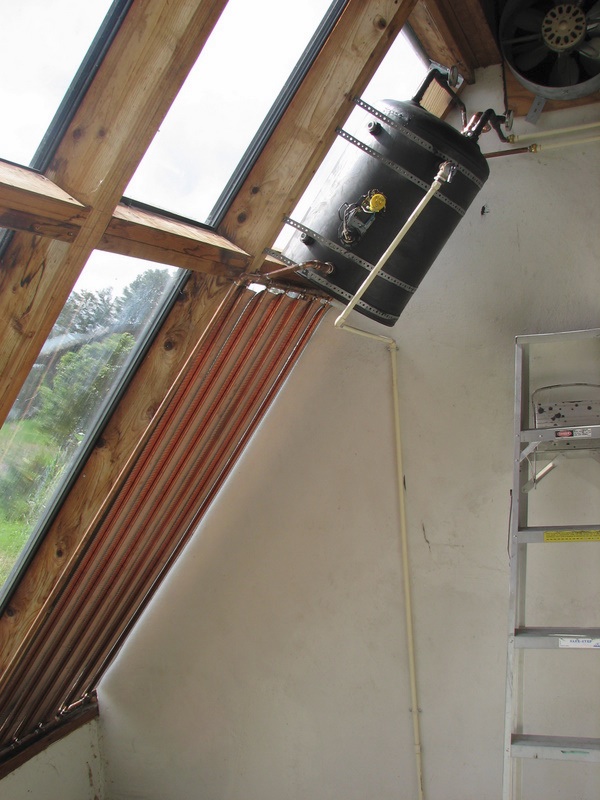
Figure 5. Solar hot water in attached solar greenhouse
To solarize a residence or other building that needs to be heated for all-season use, urbanites will raze city structures that block it from full southern exposure and will use their insulation, glass, masonry, and plumbing hardware to convert it to reliance mostly on the sun for heat and hot water. Widespread conversion will occur when the massive city and suburban built environment inventory becomes available for salvage, because this type of solarization requires no expensive technology or skills beyond elementary carpentry and plumbing. Enough business buildings to support the shrunken economy will be converted in the same way. Gradually buildings made of wood, with their short turnover time of a few decades, will give way to more durable masonry salvaged from unusable structures. The masonry will perform the added function of furnishing the thermal mass to store solar energy required by passive solar heating systems.
Food Production Systems
Like most current alternative architectural models, most organic agriculture grew in the age of cheap oil and takes for granted many of its luxuries. Food production everywhere will eventually adapt much more closely to farming in nature’s image. Like natural ecosystems, farms will have to be largely self-sufficient in inputs, including a lot of human and animal labor and relatively simple machines and tools.
City food production will reach limits, making city populations dependent on the development of farming in the hinterlands that had been suburbs. Once most empty urban spaces are used for farming, space will be a limiting factor on urban growing because demolition and removal of buildings in the energy descent will be very labor intensive. Another limiting factor will be lack of space to “grow” fertility either as green manure or manure from pastured livestock. This need for fertilizer could motivate a return to transport within the metropole using animals fed from fields outside cities, animals like those whose manure supported urban food production until well into the industrial era. In many metropolitan locations, efficient steel-on-steel rail transportation systems work as well with animal power as with energy derived from fossil fuels, just as they did for decades before and after the turn of the twentieth century. An effective policy would prioritize remaining fossil energy for the reconstruction of the rails and the rolling stock and run the latter on animal power.
A distinct advantage of farming in cities and suburbs will be the many existing structures that can be converted to solar greenhouses to furnish the heat to perform and enhance essential services in the new food system: intensive all-season growing, vermicomposting, food conservation by solar drying, and even solar cooking. Husbandry of small livestock like poultry and rabbits also will benefit from solar greenhousing. Like the solarized human housing described above, these structures will be low-cost conversions that require little skill beyond an understanding of passive solar concepts.
Implications for Tompkins County
Whatever its previous form of habitation and land use — city, suburb or rural — the most effective form of reorganization of communities everywhere will be small, dense, and mixed-use, to make the most of the traditional advantages of a convergence of many hands with diverse talents in a world made more by hand and constrained mostly to local self-reliance.
However, the size of an urban agglomeration will affect how easily the scenario that I have described will occur. Bamako, in 1962 a city of 100,000 in the heart of West Africa, seemed to manage well on relatively little fossil energy, as most of its population still cast a small carbon footprint. But Havana, with a population ten times that of Bamako, was suffering visibly despite massive compensatory government programs when I observed it during visits in the 1990s, six years into its peak oil experience (Cuba endured an 80% decline in energy and related inputs).
The larger the metropolitan area, the more population shrinkage it is likely to experience, and the greater the tendency for the city proper, like the suburbs, to break up and reorganize into compact, walkable, semi-self-sufficient communities. Cities as small as Ithaca will undergo much of the repurposing of land use and built environment described above, but the changes will be less extreme. Most of the downtown area is already walkable, and a low-input public transportation system is conceivable that would link neighborhood clusters to each other and to a rural periphery that is relatively nearby.
Like many cities on waterways, Ithaca will benefit from a potential lakeside trading area that low-input water transportation offers. The lake provides a link to a large swath of farmland that might support more of the current urban and suburban population in Ithaca than in landlocked cities. Hence waterfronts in the city and county will regain importance as points of departure in a revived system of waterborne commerce. In an era of scarce, depleted resources, this waterfront renaissance will need to occur mostly with salvaged or renewable materials.
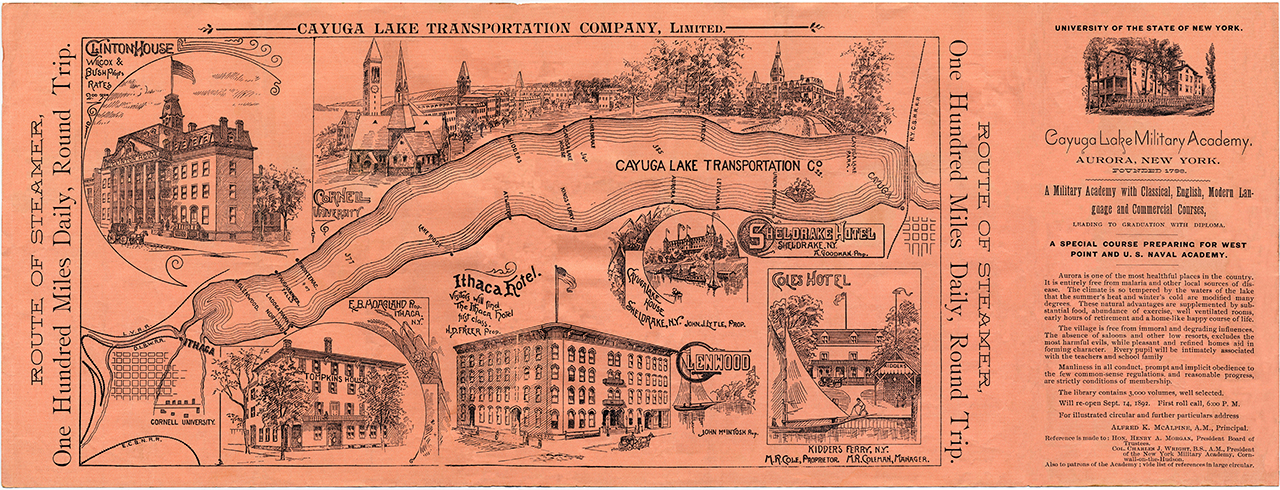
Figure 6. An advertisement for the Cayuga Lake Transportation Company, ca. 1892. The steamer served the same communities around Cayuga Lake that are served by state routes 34, 34B, 90, and 89 today. A high-resolution version of this figure can be downloaded from http://freepages.genealogy.rootsweb.ancestry.com/~springport/pictures75/7548cleaned2sharp.jpg (use “Save link as” to download before attempting to view)
The emergence of dense agrarian feeder hamlets along transportation lines mentioned in my Visioning County Food Production series[13] is more likely to proceed as I have argued here, by salvage of the existing built environment, than by expensive new development as in the present ecovillage model. However, the reorganization of the Tompkins County food production system, food economy, and resultant urban and suburban land use that I explored in that series is more conceivable in its urban and suburban population of 100,000 than in a larger metropolitan area, again for reasons that I have discussed here.
Conclusion
There is a fourth scenario for the nation’s metropoles that temporarily could partially avert the one I have described as most likely. Governments could proclaim a “wartime economy” and create a program of economic policies that redirects remaining fossil fuels and other nonrenewables to uses that adapt urban areas to a low energy future. If governments were to make appropriate major changes in economic priorities, for a while they could maintain urban populations and support levels of urban activity and consumption that are higher than what I have described. Perhaps Departments of Descent would emerge and begin setting economic policy, at least locally.
This would amount to converting the “free-market” economy to a mixed command economy, which while common in many countries, generations here in the US have been taught to regard as evil. However, our sophisticated “public relations” industry has surmounted greater challenges in manipulating the collective consciousness, and may well show itself equal to the task of achieving a flip-flop in public thinking. Whatever the success of a period of legislated economic planning, its main positive function would be to delay the inevitable return to a solar energy economy long enough to help society prepare and adapt.
The present degree of external private control of local economies is backed by government policy at all levels and is a major obstacle to adaptation to the needs of the energy descent. Therefore, an even better scenario that goes beyond emergency economic planning at a national level might be a national program to gradually devolve centralized economic control over the production of necessities to local communities, which would even give them the potential to experience economic democracy if they are so inclined.
But these scenarios might be too much to expect from the vested interests that control much of state and federal policy making. Hence my thinking about scenarios here has taken the route of cautiousness; it assumes that because the notion of public planning of economic resource use in the public interest at any level of government has become alien to US cultural values, it is more likely that cities and suburbs will be left to self-reorganize more or less chaotically into forms that can support some level of human habitation in the energy descent.
Because of all the contingencies to consider, I believe it impossible to estimate with a useful degree of probability the pace at which the scenario that I have described will come to pass. At present, for example, debt at all levels of social organization is being used to put off the inevitable, although it will only make a later transition more difficult. However, the gradual failure of the energy-intensive metropolitan way of life is already making itself felt in declining living standards for the great majority who are caught up in it. Insolvency is increasing in municipalities, forcing them to start filing for bankruptcy. Sooner or later in coming years and decades, most of us will be forced to organize our lives differently. This attempt to picture the consequences of declining energy for urban and suburban areas hopefully will facilitate that transition.
Notes
[1] Kunstler, James Howard. The Geography of Nowhere: The Rise and Decline of America’s Manmade Landscape. Simon & Schuster, 1994.
[2] Kunstler, James Howard in The End of Suburbia, 2004. http://www.youtube.com/watch?v=Q3uvzcY2Xug
[3] Vail, Jeff. “Resilient Suburbia,” 2010. http://www.jeffvail.net/2010/01/resilient-suburbia-toc.html
[4] Tainter, Joseph. The Collapse of Complex Societies. Cambridge University Press, 1988.
[5] Owen, David. Green Metropolis: Why Living Smaller, Living Closer, and Driving Less Are the Keys to Sustainability. Riverhead Books, 2009.
[6] Fridley, David. “Embodied Energy: An Alternative Approach to Understanding Urban Energy Use.” The Oil Drum, August 12, 2010. http://www.theoildrum.com/node/6842
[7] Owen, David. Op. cit.
[8] Odum, Howard T. and Elizabeth C. Odum. A Prosperous Way Down: Principles and Policies (University Press of Colorado, 2001), p. 174. Written by pioneers in the application of systems ecology and energetics to problems of society.
[9] Heinberg, Richard. “Fifty Million Farmers.” Energy Bulletin, November 17, 2006. http://www.energybulletin.net/node/22584
[10] Kunstler, James Howard. “Back to the Future: A roadmap for tomorrow’s cities.” Orion, July/August 2011.
[11] Kunstler, James Howard. Too Much Magic: Wishful Thinking, Technology, and the Fate of the Nation. Atlantic Monthly Press, 2012.
[12] Vail, Jeff. “Envisioning a Hamlet Economy: Topology of Sustainability and Fulfilled Ontogeny,” 2009. http://www.jeffvail.net/2006/04/envisioning-hamlet-economy-topology-of.html
[13] The series was published here in six parts:
http://tclocal.org/2009/07/visioning_county_food_producti.html
http://tclocal.org/2009/09/visioning_county_food_2.html
http://tclocal.org/2010/02/visioning_county_food_prod_3.html
http://tclocal.org/2010/05/visioning_county_food_prod_4.html
http://tclocal.org/2010/06/visioning-county-food-prod-5.html
http://tclocal.org/2010/07/visioning_county_food_prod_6.html
